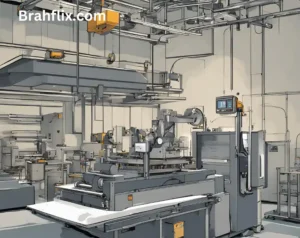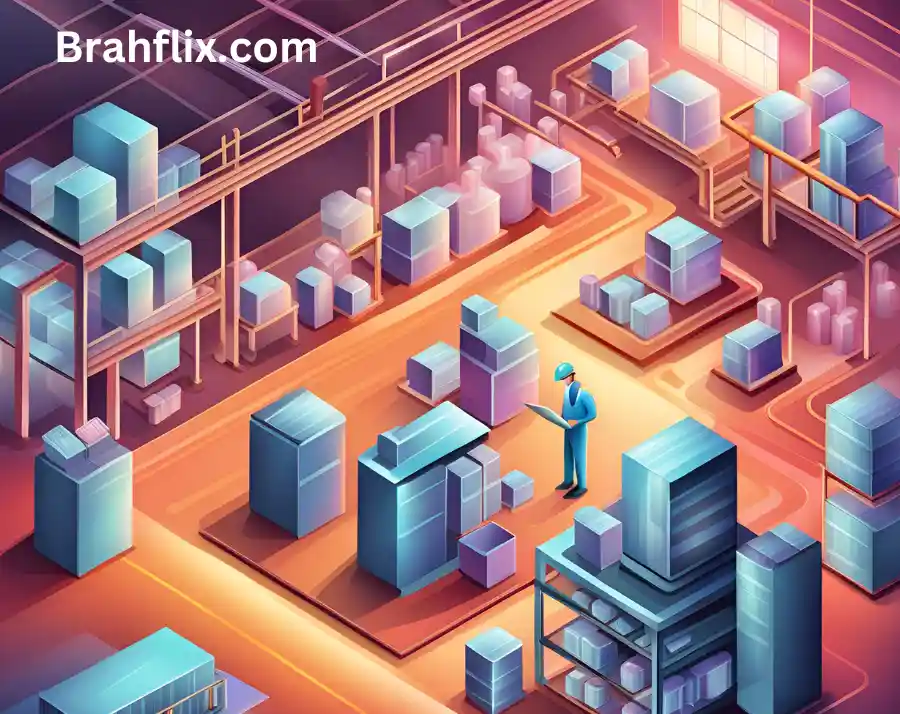Introduction
Material Requirements Planning (MRP) is a critical component in the manufacturing sector, playing a pivotal role in production planning, scheduling, and inventory control. MRP in manufacturing helps businesses manage the balance between supply and demand, ensuring that materials are available for production and products are delivered to customers on time. This article delves into what MRP is, its importance, how it works, and its benefits for manufacturers.
Key Takeaways
- MRP (Material Requirements Planning) is a systematic approach to managing manufacturing processes.
- It optimizes inventory, reduces waste, and ensures timely production.
- MRP is essential for efficient supply chain management and meeting customer demand.
- Key components include inventory control, production scheduling, and demand forecasting.
- Implementing MRP can lead to significant cost savings and productivity improvements.
1. What is MRP in Manufacturing?
Material Requirements Planning (MRP) is a production planning, scheduling, and inventory control system used to manage manufacturing processes. It is designed to ensure that the right materials are available at the right time in the right quantity. By using MRP, manufacturers can plan their production schedules, order materials, and manage inventory efficiently, reducing waste and costs.
MRP systems work by analyzing the Bill of Materials (BOM), inventory data, and the master production schedule to calculate the materials required to meet production demands. The main objectives of MRP are to ensure materials are available for production, maintain the lowest possible inventory levels, and plan manufacturing activities, delivery schedules, and purchasing activities.
Key Features of MRP:
- Inventory Management: Helps in maintaining optimal inventory levels.
- Production Planning: Aligns production schedules with material availability.
- Demand Forecasting: Predicts future material requirements based on historical data and sales forecasts.
2. The Importance of MRP in Modern Manufacturing
In today’s fast-paced manufacturing environment, MRP systems are indispensable tools that help manufacturers meet customer demands efficiently and cost-effectively. The ability to accurately plan for material requirements allows companies to avoid stockouts, reduce lead times, and manage production schedules effectively.

Benefits of MRP:
- Reduced Inventory Costs: By ensuring materials are only ordered when needed, MRP helps in minimizing excess inventory, thus reducing holding costs.
- Improved Production Efficiency: MRP optimizes production schedules, reducing idle time and enhancing workflow.
- Enhanced Customer Satisfaction: By ensuring timely delivery of products, MRP helps in meeting customer expectations and improving service levels.
- Better Resource Utilization: MRP aids in the efficient use of resources, such as labor, equipment, and materials, by coordinating all aspects of the production process.
3. How Does MRP Work?
The MRP process starts with demand forecasting, where customer orders, market trends, and historical data are analyzed to estimate future demand. This forecast forms the basis for creating the master production schedule (MPS), which outlines what needs to be produced, when, and in what quantity.
Steps in the MRP Process:
- Demand Forecasting: Predicts the quantity of finished goods required.
- Master Production Schedule (MPS): Specifies the production timeline.
- Bill of Materials (BOM): Lists the raw materials needed for production.
- Inventory Status Records: Tracks current inventory levels and planned receipts.
- MRP Calculations: Determines the required materials and timing for their availability.
- Planned Orders: Generates purchase orders and production orders based on the MRP calculations.
This systematic approach allows manufacturers to plan production and inventory levels accurately, ensuring that materials are available when needed without maintaining excessive stock.
4. Key Components of an MRP System
An effective MRP system consists of several key components that work together to manage the manufacturing process. Understanding these components is crucial for the successful implementation of MRP.

Major Components:
- Bill of Materials (BOM): A detailed list of all raw materials, components, and assemblies required to build a product. It serves as the foundation of MRP, helping to calculate material requirements.
- Master Production Schedule (MPS): A plan for the production of finished goods, specifying quantities and timelines. It aligns production with customer demand.
- Inventory Records: Data on current stock levels, including raw materials, work-in-progress, and finished goods. Accurate inventory records are essential for MRP accuracy.
- Work Orders and Purchase Orders: Documents generated by the MRP system to schedule production and purchase materials. They ensure the timely availability of necessary resources.
5. Benefits of Implementing MRP in Manufacturing
Implementing MRP in manufacturing offers a range of benefits that help improve efficiency, reduce costs, and enhance overall production management. Below are some of the key advantages:
Key Benefits:
- Inventory Optimization: MRP helps in maintaining optimal inventory levels by ordering materials only when needed, reducing storage costs and waste.
- Reduced Lead Times: By planning production and material requirements accurately, MRP helps in shortening lead times, enabling faster response to customer demands.
- Improved Production Scheduling: MRP allows for better scheduling of production activities, reducing downtime and ensuring a smooth production flow.
- Enhanced Decision-Making: With accurate data on material requirements and inventory levels, MRP supports better decision-making, helping managers respond quickly to changes in demand.
6. Challenges and Limitations of MRP
While MRP offers numerous benefits, it is not without challenges. Implementing an MRP system requires careful planning and management to avoid potential pitfalls.
Common Challenges:
- Data Accuracy: MRP relies heavily on accurate data. Inaccurate inventory records or errors in the Bill of Materials can lead to incorrect material planning.
- Complexity: Implementing and managing an MRP system can be complex, particularly for large organizations with intricate production processes.
- Cost: The initial cost of setting up an MRP system, including software and training, can be high. Ongoing maintenance and updates also add to the expense.
- Dependency on Technology: MRP systems are technology-dependent, and any system downtime or technical issues can disrupt the entire production planning process.
7. MRP vs. ERP: Understanding the Difference
While MRP and ERP (Enterprise Resource Planning) are both used in manufacturing, they serve different purposes. Understanding the difference between these two systems can help businesses choose the right solution for their needs.
Key Differences:
- Scope: MRP focuses on production planning and inventory control, while ERP encompasses a broader range of business functions, including finance, HR, and supply chain management.
- Integration: ERP systems integrate all aspects of the business, providing a holistic view of operations, whereas MRP is primarily concerned with manufacturing processes.
- Functionality: MRP is a component of ERP systems, but it can also operate as a standalone solution for smaller businesses that do not require the full functionality of an ERP system.
8. Best Practices for Successful MRP Implementation
To maximize the benefits of MRP in manufacturing, it is essential to follow best practices during implementation. This ensures that the system operates effectively and delivers the desired results.

Tips for MRP Implementation:
- Ensure Data Accuracy: Accurate data is critical for MRP success. Regularly update inventory records, BOMs, and production schedules to maintain data integrity.
- Invest in Training: Proper training for staff is crucial to ensure they understand how to use the MRP system effectively.
- Start Small: Begin with a pilot project to test the system before rolling it out across the entire organization. This helps in identifying potential issues early on.
- Regularly Review and Adjust: Continuously monitor MRP performance and make adjustments as needed to address changing production demands or supply chain disruptions.
9. Real-World Examples of MRP Success
Many companies have successfully implemented MRP systems to improve their manufacturing processes. Here are a few examples:
Case Studies:
- Automotive Industry: A leading car manufacturer reduced inventory costs by 20% and improved production efficiency by implementing an MRP system that streamlined material planning and scheduling.
- Electronics Manufacturer: By adopting MRP, an electronics company was able to better manage its complex supply chain, reducing lead times by 30% and meeting customer delivery expectations more consistently.
- Food and Beverage Industry: A food manufacturer used MRP to optimize inventory levels, resulting in a 15% reduction in waste and significant cost savings.
These examples demonstrate the transformative impact that MRP can have on manufacturing operations, driving efficiency and profitability.
FAQs
What is the primary purpose of MRP in manufacturing?
The primary purpose of MRP in manufacturing is to ensure that materials are available for production, inventory levels are optimized, and production schedules are aligned with demand.
How does MRP improve production efficiency?
MRP improves production efficiency by accurately planning material requirements, reducing idle time, and optimizing production schedules to match demand.
What are the main components of an MRP system?
The main components of an MRP system include the Bill of Materials (BOM), Master Production Schedule (MPS), inventory records, and work/purchase orders.
Can MRP be used in small manufacturing businesses?
Yes, MRP can be used in small manufacturing businesses. It helps small manufacturers manage inventory and production schedules efficiently, even with limited resources.
What are the differences between MRP and ERP systems?
MRP focuses specifically on manufacturing processes, such as material planning and inventory control, while ERP systems integrate a broader range of business functions, including finance and HR.
Conclusion
Understanding what MRP in manufacturing is and how it functions can provide significant advantages for businesses seeking to improve production efficiency and manage inventory effectively. By implementing MRP, manufacturers can reduce costs, improve customer satisfaction, and enhance overall operational efficiency. As technology continues to evolve, the role of MRP in manufacturing will likely expand, offering even more tools and capabilities to drive business success.
Questions for Readers:
- Have you implemented MRP in your manufacturing processes?
- What challenges have you faced with MRP, and how did you overcome them?
- Are you considering upgrading to an ERP system that includes MRP?
Call to Action: If you found this article helpful, explore our other blogs on manufacturing best practices and learn more about optimizing your production processes!


